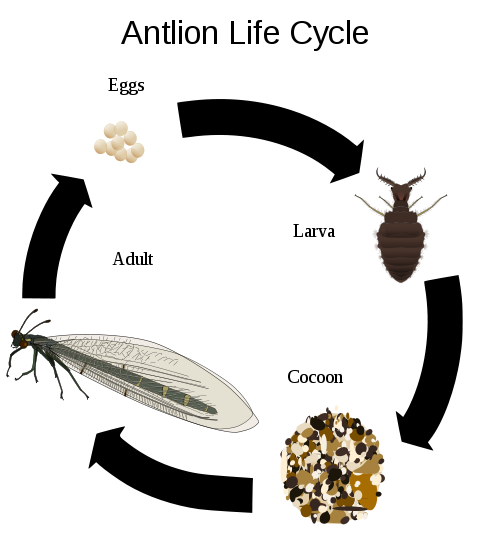Antlions have four major stages in their life cycle. First they start out as eggs hatching out of the sand. The antlion larvae will grow to about 15 mm in length and have tremendous jaws for capturing prey. After the larvae reach maturity they begin to spin a globular, heavy silken cocoon with soil particles incorporated into the outside layer. This cocoon is usually a few centimeters under the surface and will remain there for about a month until the adult antlion emerges. Twenty minutes after appearing outside of the cocoon, the adult will be ready to fly and find a mate. Females hang from a twig as a male attaches his anterrior end to hers. After fertilization of the eggs, the female looks for warm sand to lay her eggs. When she finds a suitable spot, she taps the tip of her abdomen to the surface of the sand. Next she inserts her abdomen into the sand and lays around twenty eggs. After laying her eggs the female will return to her tree or bush until mating happens again.

Image by Bugboy52.40 from wikipedia.org
For information on B. nebulosus interactions with other organisms visit the Interactions page.

